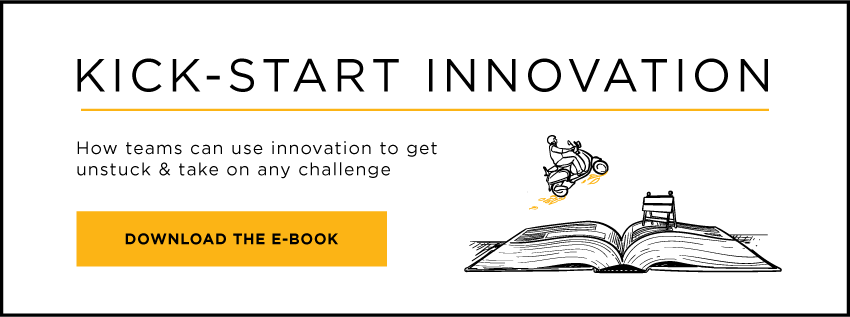How innovation schools are preparing students for the future of work
To be competitive in the future, employees will need skills that allow them to be more creative, agile and innovative. According to a 2018 report from McKinsey & Company, demand for creativity in the workplace is going to “rise sharply” in the coming years. Critical thinking, decision-making, and emotional intelligence will also be needed to achieve success in the workplace of the future.
These skills all flourish in a design thinking environment, which is part of why companies are so interested in putting their people through design thinking workshops and innovation labs.
One of the biggest challenges we face in workshops is helping employees to reconnect with the creative ambition that came naturally in their youth. But that may be less a problem in the years to come. Recent trends suggest that schools are increasingly bringing design thinking strategies into the classroom, as a way to prepare these kids for the future of work.
In Lincoln, Nebraska for example, two middle schools are now testing a design thinking course that is designed to help kids learn how to collaborate as they explore, research and create. “As we look at our students and their future, we're looking at their ability to think critically and solve problems," Kelly Schrad principal of one of the schools told the Lincoln Journal Star about the program. "This was specifically designed for sixth grade to give kids a model to work through that process."
Education Week reported on a similar program in Michigan, where a new design-focused middle school has been built within the Grand Rapids Public Museum. The school was formed as a collaboration between the public school, local universities, the museum, and city leaders to provide students with a uniquely collaborative and creative academic environment. The curriculum will be founded on design thinking principles and will make full use of the museum collections as part of the learning experience.
“The current problems in education could use some creative solutions,” Dr. David Coffey, a professor at Grand Valley State University (GVSU) and a consultant for the university’s Design Thinking Academy says about the project. “Design thinking offers a set of mindsets and methods that can bring creativity back into educational decision-making; it encourages out-of-the-box thinking.”
Several high schools are also embracing this trend, including Design Tech (d.tech), a free charter school in California where the curriculum is built around using design thinking to solve real-world problems. The founders collaborated with Stanford’s famous D.school to create the curriculum, tools and resources to integrate design thinking throughout the school’s culture. “This is going to be a place where people accomplish things that seem beyond their reach, where you run into a problem rather than away from it, where you continue to do the unexpected and where people live dreams that seem too big to dream,” Dr. Ken Montgomery executive director of the school says on the school website.
The U School in Philadelphia is also embracing design thinking as a way to engage and encourage students. The college prep high school treats every student as a designer who is challenged to solve real-world problems through planning, research, dreaming, and testing their ideas. According to the website The U School “seeded the design process at the core of the institution to help guide students and educators through inquiry and change.” The school adopted the curriculum five years ago, and had its first graduating class of designers in 2017, Principal Neil Geyette told the Philly Tribune. “We’re really excited to see the kids who are soaked in the model and really took control of their learning and manage their lives.”
These are just a few of the dozens of schools adopting design thinking challenges, courses, and whole curricula to help kids think differently about problem-solving and collaboration. And it is all good news for businesses thinking about their own future workforce. The sooner we introduce students to design thinking concepts, the better able they will be to embrace these concepts in their approach to work.
With technological advances that have created increasingly complex problems and industry-wide disruption across sectors, it’s the people who can identify and solve new problems in new ways that will be in great demand.
Learn how to enable innovation skill-building at scale or download our free ebook Kickstart Innovation: A Guide for Organizations.
